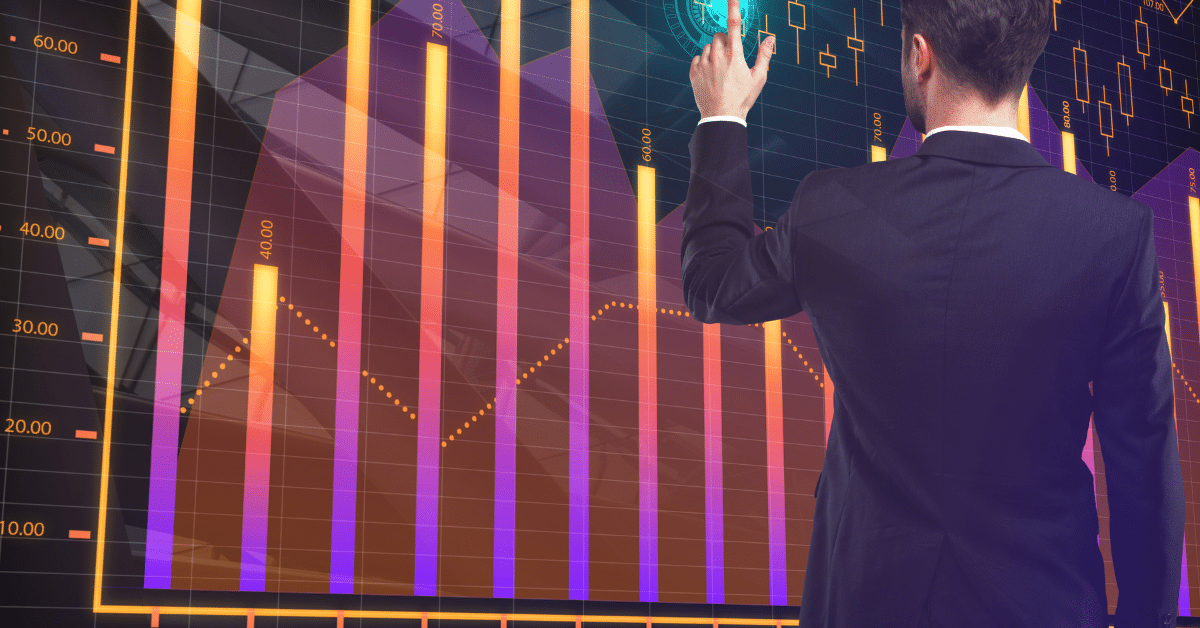Forex charts come in different forms and can be customized to show specific information. Forex, or foreign exchange, trading is the process of exchanging one currency for another. It is one of the world’s largest and most active financial markets, with a daily turnover of over $6 trillion. To earn the title of a successful forex trader, it’s essential to have a good understanding of forex charts. This is a graphical representation of all currency price movements over time.

Forex charts are available in a variety of formats and can be tailored to display particular data. The most common type of forex chart is a candlestick chart, which displays four price points for each time period: the opening price, the closing price, the highest price, and the lowest price. Candlestick charts help visualize price trends and determine potential buy and sell signals.
Another type of forex chart is a line chart, which only displays the closing price for each period. Line charts are simpler to read and can be used to track overall price movements, but they provide less detail than candlestick charts.
The Customization of a Forex Chart:
Forex charts can also be customized to show different time frames, such as 5 minutes, 1 hour, 4 hours, daily, weekly, or monthly. Different time frames can provide different perspectives on market movements and can be used to identify different types of trends. For example, a daily chart can show long-term price trends, while a 4-hour chart can show short-term price movements.
Technical Indicators in a Forex Chart:
Forex charts also often include technical indicators, such as moving averages, Bollinger Bands, and oscillators, which can help traders make more informed decisions. For example, moving averages can help identify trends, while oscillators can indicate overbought or oversold conditions in the market.
In conclusion, forex charts are an essential tool for forex traders. By using different charts and customizing them to show specific information, traders can better understand market movements and make more informed trading decisions. It’s important to remember that charts should not be used as the sole basis for trading decisions and should be combined with other forms of analysis, such as fundamental and economic analysis.
How to read Forex Charts?

A Step-by-Step Guide:
Forex charts are an essential tool for traders to visualize and analyze the movements of currency prices over time. Here is a step-by-step guide on how to read forex charts:
- Identify the type of chart: The most common type of forex chart is a candlestick chart, which displays four price points for each time period: the opening price, the closing price, the highest price, and the lowest price.
- Understand the time frame: Forex charts can be customized to show different time frames, such as 5 minutes, 1 hour, 4 hours, daily, weekly, or monthly. Choose the time frame that best suits your trading strategy.
- Study the price movements: Look at the price movements over time and see if there are any patterns or trends. Upward price movements indicate an uptrend, while downward price movements indicate a downtrend.
- Identify support and resistance levels: Support levels are the price points where the price tends to find support and not fall below, while resistance levels are the price points where the price tends to encounter resistance and not rise above.
- Use technical indicators: Forex charts include technical indicators, such as moving averages, Bollinger Bands, and oscillators, which help traders make better-informed decisions. For example, moving averages can help identify trends, while oscillators can indicate overbought or oversold conditions in the market.
- Combined with other forms of analysis: Charts should not be used as the sole basis for trading decisions and should be combined with other forms of analysis, such as fundamental and economic analysis.
Reading forex charts is a crucial part of successful forex trading, by understanding the time frame, studying the price movements, identifying support and resistance levels, and using technical indicators. Traders can better understand market movements and make more informed trading decisions.
Is special education required to read forex charts?

Special education or experience is not necessarily required to read forex charts, but it can be helpful to understand the forex market and technical analysis. Learning to read charts, including different types of charts and technical indicators, can take time and practice.
Many resources are available for learning about forex charts and technical analysis, including online courses, books, and videos. It can be helpful to start with the basics and gradually build up your knowledge and skills.
It’s also important to remember that while charts can provide valuable information, they are just one tool in a trader’s arsenal. Successful trading also requires a solid understanding of fundamental and economic analysis, discipline, and risk management.
In conclusion, while special education or experience is not required to read forex charts, it is recommended to gain a basic understanding of the forex market and technical analysis in order to make informed trading decisions.
What is Forex Trading? The Ultimate Guide

